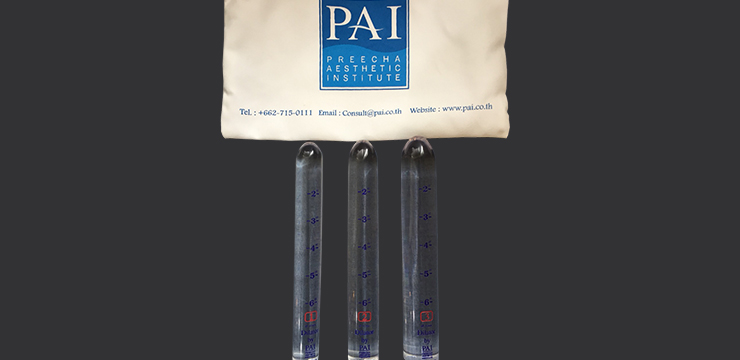Contact Us

August 30, 2018
Post-Operative Care Is Vital to Your SRS Journey
Gender-affirmation surgery is often the final gender-confirming medical intervention sought by those patients suffering from gender dysphoria. In the male-to-female (MtF) transgendered patient, the creation of esthetic and functional external female genitalia with a functional vaginal channel is of the utmost importance.
The World Professional Association for Transgender Health (WPATH) is the world’s most respected body when it comes to transsexual health. They advise medical institutions, health practitioners and regulatory bodies on the care and treatment of those who fall outside the traditional categories of gender.
Many people may imagine when the operation is done, it is the end of their SRS journey. Well, it is just the beginning. Patients need a good guide for their post-operative care to prevent complications and get a desired outcome.
The most common complication was stenosis of the neo-meatus (14.4%). Wound infection was associated with an increased risk of all tissue-healing complications. Use of sacrospinous ligament fixation (SSL) was associated with a significantly decreased risk of prolapse of the neovagina.
Immediate Post-operative Considerations
Gauze packing or a stenting device is placed in the vagina intraoperatively and remains in place for 5-7 days. Once removed, the patient is instructed in vaginal dilation, with dilators generally provided by the surgeon; dilation schedules vary between surgeons.
Post-operative Care
Wound cleansing is required for 1-2 months after surgery and they have to dilate regularly to enlarge the neovaginal cavity and to maintain the depth.
Wound Cleansing
Normally, our surgeon will remove the bandage of the neovagina 3-4 days after surgery. Nurses will teach patients how to clean their wound in a simple process as follow:
▪ Mix normal saline solution or drinking water (200 ml) with 2 taps of Betadine.
▪ Dip cotton balls or cotton buds in the solution and clean the skin fold around labia minora.
▪ Rinse your neovagina with the douche.
▪ Rinse the vaginal cavity using the douche. Insert the tip of the douche pouch into the vagina, and squeeze it to release the fluid. Continue rinsing the inside of the vagina until you have used all the available fluid.
▪ Then, dry the neovagina with tissue paper.
▪ After that, apply antibiotic powder.
▪ Clean your wound at least 2 times a day after dilation.
Dilation
The patient and the surgeon share responsibility to achieve the best surgical outcome and maintain a good functional vaginal depth after sex reassignment surgery.
For the surgeon’s part, our surgeon safely creates the maximum depth of the vaginal tunnel and then utilize the best quality of skin to form the entire lining of the vagina.
For the Patient’s part, it is your responsibility to strictly follow our surgeon vaginal dilation program in order to maintain the original depth of vagina.
Adherence to the dilation regimen is critical to healing and maintaining vaginal depth and girth. After the initial healing period, dilation must continue regularly for at least one year postoperatively. The depth and the width of the vagina should be checked regularly as one tapers down the dilation schedule.
The stretching force from vaginal dilation can prevent skin graft contraction inside vagina and also provide good elasticity of vaginal wall to accommodate penetration regardless of size. Without adequate and correct vaginal dilation, the skin inside the vagina tends to shrink or contract which lead to the shortening of vagina. Shortened vagina resulting from skin graft contraction inside the vagina is an irreversible process which means you cannot regain your original vaginal depth by resuming or doing more vaginal dilation.
During the first year after SRS, we recommend you to do vaginal dilation 2 times per day (15-30 minutes in the morning – 15-30 minutes before bedtime).
▪ You should wash your hand and dilator(s) before and after vaginal dilation by using water and mild soap.
▪ Put a condom on the dilator and apply water based lubricant jelly on top of the dilator. Lubricant jelly is mandatory for every time you do dilation or have sexual intercourse in order to prevent tearing of the delicate skin inside the vagina.
▪ Lie on your back in semi recumbent position with your legs bent, and then position the lubricated dilator against the vaginal opening located below the urethral opening.
▪ While inserting the vaginal dilator, you should slowly slide the tip of the dilator in the area right under your urethra. Two months after the operation, the dilator can be rotated in circles to help expand the opening of the vagina.
▪ Slowly push forward your dilator at an angle toward your tail bone until it occupies the full depth of your vagina. Gentle and constant pressure is needed for stretching the skin graft at the bottom of vagina in order to maintain your original vaginal depth.
You should frequently check the scale number on the dilator to ensure that you can reach the bottom of vagina with at least the smallest size of dilator (dilator No.1). When you are starting to use the bigger dilator, it is common that it cannot be push forward into full vaginal depth as the smaller dilator. We can assure you that the bigger dilators (No. 3 & No. 4) can gradually go deeper inside vagina and finally reach the bottom of vagina with your dilation.
Loss of vaginal girth due to inadequate dilation can often be remedied by increasing dilation frequency; loss of vaginal depth is more difficult to address by dilation alone. Persistent pain or otherwise problematic dilation should be discussed with the surgeon.
Length of Time Abroad
The time spent in hospital depends on the number of surgical procedures. Generally you will need to be there for a minimum of 5 days. It is very important that you have sufficient aftercare in the days following surgery to ensure that everything went well. Clinics have dedicated teams of nurses who care specifically for gender surgery patients during the recovery phase. Most gender surgery patients stay in Thailand for around a month, giving them plenty of time to recover before returning home.
Source:
https://www.ncbi.nlm.nih.gov/pubmed/29057562
http://transhealth.ucsf.edu/trans?page=guidelines-vaginoplasty
https://www.medigo.com/blog/medigo-guides/male-to-female-srs-thailand-guide
09-transgendersurgerythailand.com
Gender reassignment surgery - Contact us
Messages : estetica.thailandia
Email : [email protected]
Other Blog Page
-
Understanding the Importance of Pre-operative Genital Hair Removal for MtF Gender Reassignment Surgery
-
SRS IN THAILAND DURING COVID-19 : PROCESS OF ENTRY
-
Introducing “Diamond technique”
-
Your SRS Trip to Thailand: Getting Ready for it!
-
Facial Feminization Surgery (FFS) in Thailand with Estetica Thailandia
-
What You Need to Know Before Deciding to Do Cosmetic Surgery in Thailand
-
Which SRS technique is right for me?
-
How to Start Your SRS Trip with Us
-
Research Overview on the Life-Changing SRS Journey to Find Your True Self and Happiness
-
Is Labiaplasty Needed After Sex Reassignment Surgery (SRS)?
-
How To Reduce Pain After Facial Feminization Surgery (FFS)
-
Overview of Sigmoid Colon Vaginoplasty for MtF (Sigmoid Colon SRS)
-
7 Reasons Why You Need Our Service
-
Frequently Asked Questions about Sex Reassignment Surgery (SRS)
-
Advance Sex Reassignment Surgery Techniques
-
Tracheal Shave in Facial Feminization Surgery
-
What I Wish I’d Known Before Undergoing Sex Reassignment Surgery
-
Post-Operative Care Is Vital to Your SRS Journey
-
5 Things you Need to Know Before Sex Reassignment Surgery in Bangkok


